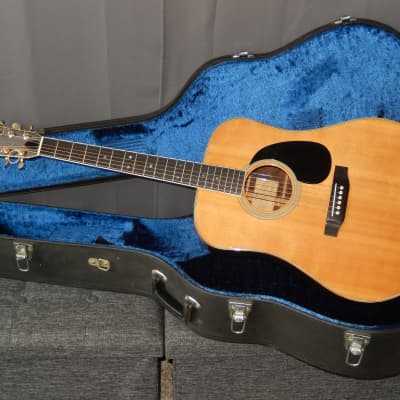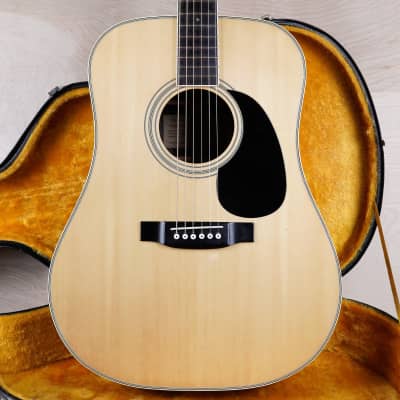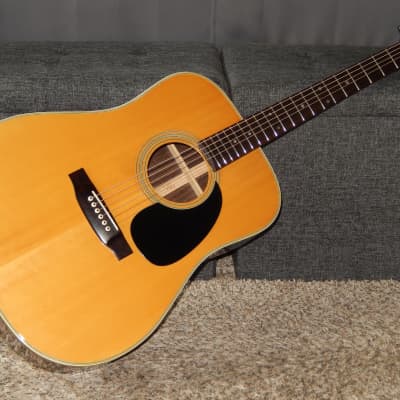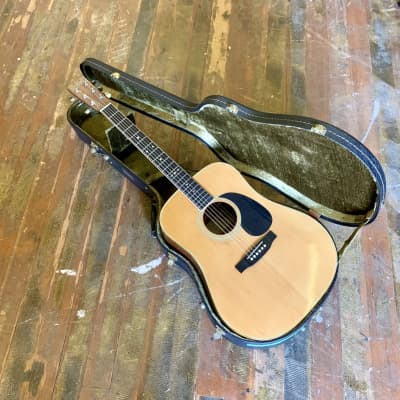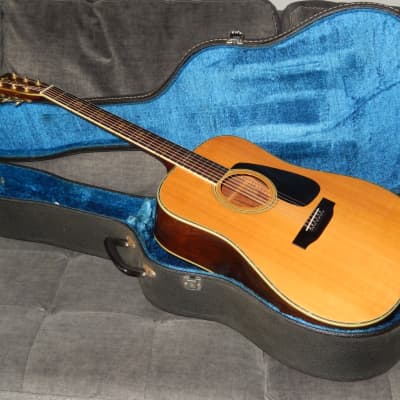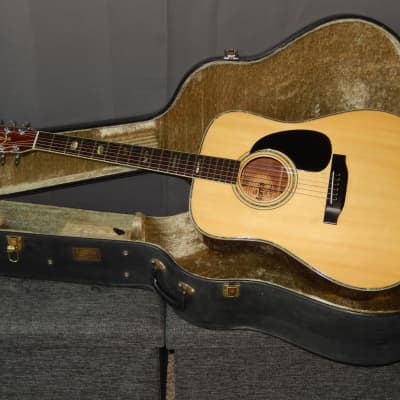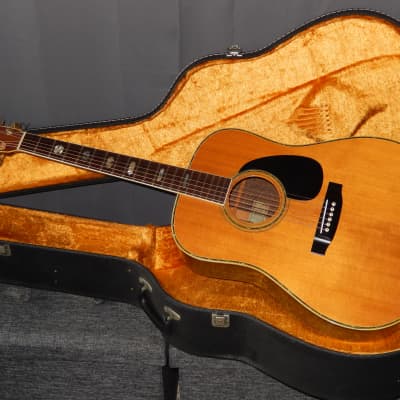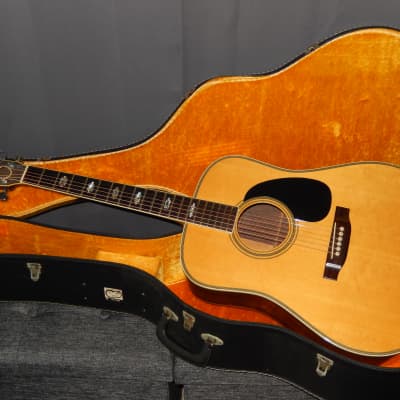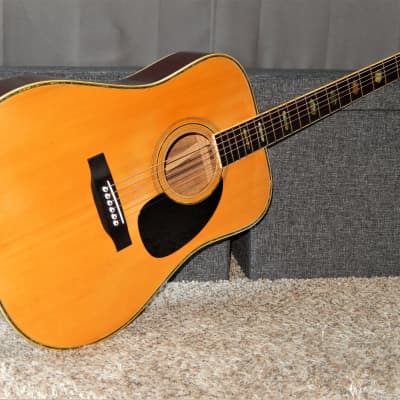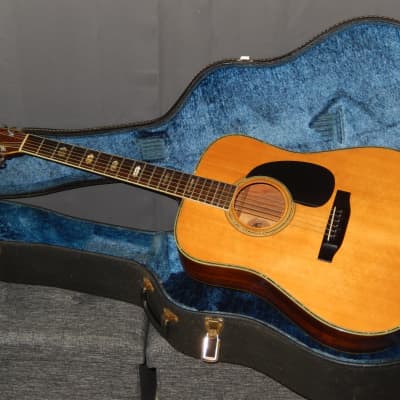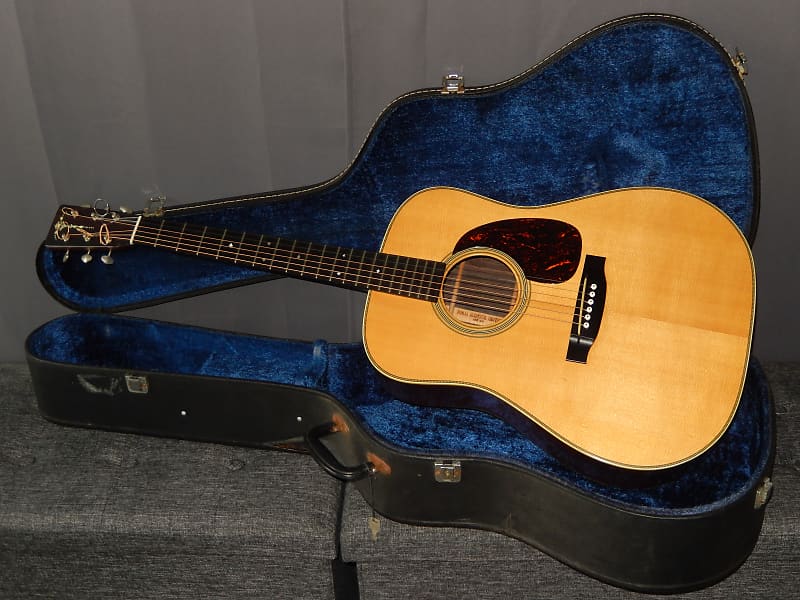

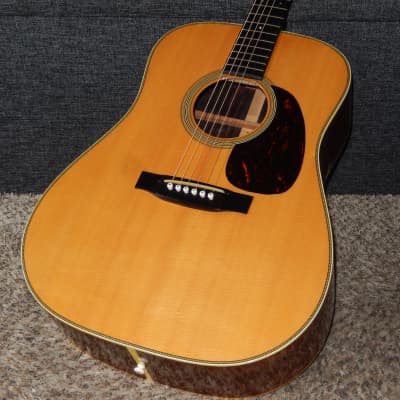
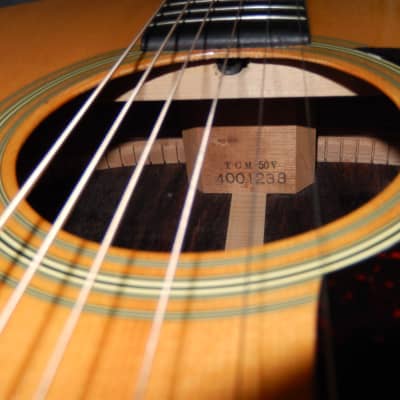
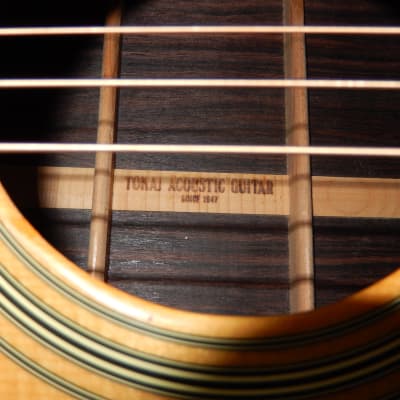
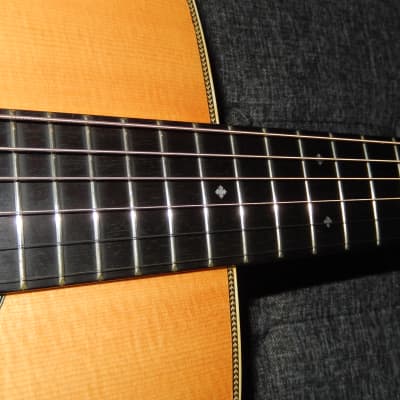
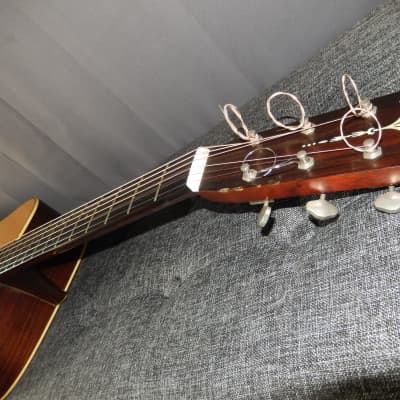
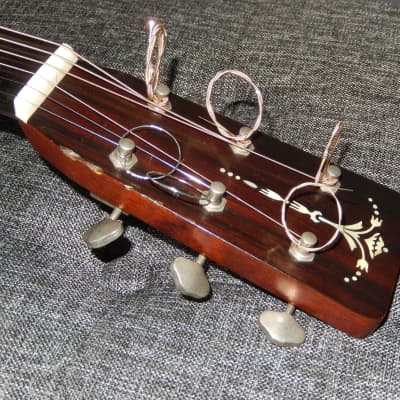
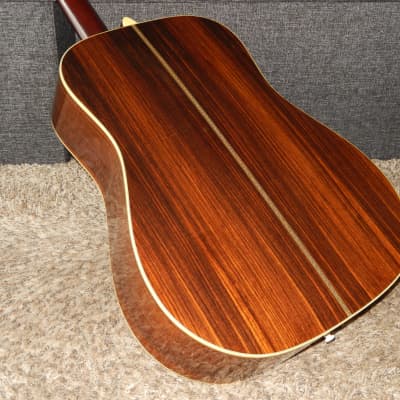
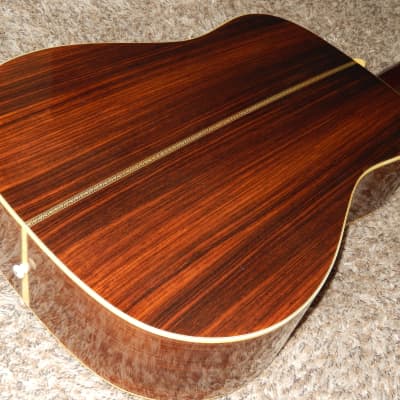
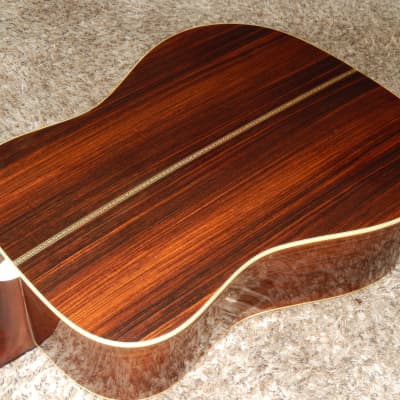
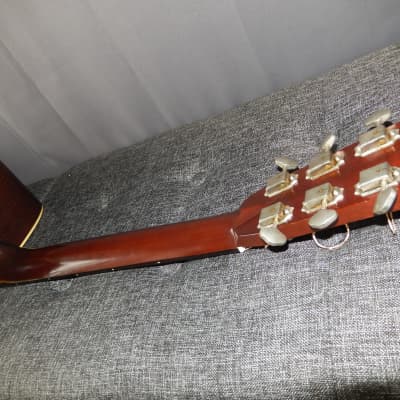
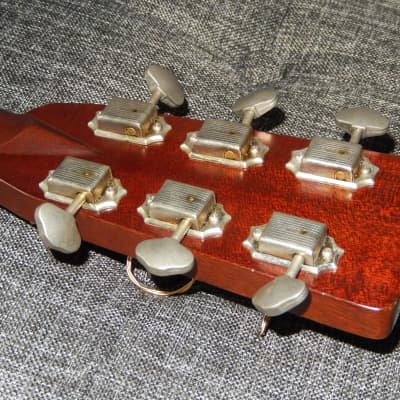
Cat’s Eyes TCM50V 1985 by Tokai
Most acoustic guitar players around the world know that since late 1960s Japanese makers were creating wonderful “copies” of Martin, Gibson and Guild guitars. Many experienced players know that many of these “copies” sound better than the “originals”. This fame especially applies to Sigma guitars made by Martin’s Japanese partner, Tokai Co. In fact, some of these Sigmas were also made by Yasuma Gakki, Terada Gakki and perhaps other workshops.
In 1975 Tokai launched their own line of acoustic guitars branding them as “Cat’s Eyes” and advertising them as “made in partnership with Martin”. Made basing on Martin’s blueprints and enhanced by Japanese ingenuity and highest level of craftsmanship, these guitars quickly became very popular and recognized by majority of international players as “Martins made in Japan”. Back then they were sold at very favorable to international importers prices. Due to changes in World and Japanese economies (hence currency exchange rates), by the end of 1970s cost of “made in Japan” guitar was much higher that just 5 years earlier. Higher grade instruments became more and more expensive, while lower priced ones were made for less and less. That led to decisively declining exports and meant the end of Golden Era for Japanese guitar makers. Some makers were gone for good, some incorporated into larger entities, while others seriously restructured. Tokai kept making their first generation of Cat’s Eyes guitar until mid1980s. After over a decade long break, by late 1990s, Tokai re-started making Cat’s Eyes with lineup of new models, however ending it around mid2000s. The fame of “Cat’s Eyes” lives on.
The guitar you are looking at was made in early/mid 1980s and was a lower end among Cat’s Eyes models of that era. These models were made in few versions. Models TCM50V in style of old Martin D28.
As of today, if you wanted to order a brand new guitar made in Japan with similar woods, looks and construction it would cost you at least $2500. If in addition you would like it to have the same vintage sound the price would be at least $3000. It is not that difficult to find out what are the current prices of Japanese made acoustic guitars.
In terms of volume and tonality it certainly is a professional level instrument, that can easily beat modern era Martin D45 guitars. It offers immense volume, combined with very deep ("full of iron") yet clean basses and very strong brilliant trebles. With its very extended sustain it is very easy to enjoy. With its current action it plays very easy.
Despite few dents on the edge of the headstock, few very minor marks on the top, back and sides overall condition of this guitar can be described as “as excellent for its age”.
Very importantly its neck is straight, fingerboard and frets in excellent shape. With current action it playes very easy.
Specification:
Top: Solid Spruce/Martin style X bracing with not scalloped braces /lacquer
Back & Sides: non-solid Indian Rosewood/urethane
Neck: Mahogany with 2-way truss rod
Fingerboard: Ebony
Nut width: 43mm
Scale: 645 mm
The action is set to 2.50 mm under E6 and 2.00 mm under E1, with still some extra room on the saddle.
This guitar will be shipped in used hard shell case in still usable good condition.
The key to understand value of vintage Japanese guitars is to acknowledge galloping price inflation (devaluation of Japanese yen) during 1960s & 1970s. This inflation slowed down in 1980s.
During 1960s and most of 1970s model numbers of Japanese guitars were strictly interconnected with their prices in Japanese yen. By early 1980s and during following decades model numbers were no longer strictly associated with their prices. Some Japanese guitar makers introduced model names instead of model numbers. Others were still using model numbers with addition of letters and/or other symbols.
It is then important to understand that two Yamaha GC10 guitars made 10 years apart are two instruments of totally different class. The same applies to any other Japanese maker/brand.
The logical way to estimate the true class of any given Japanese made instrument is to compare its price with the average annual salary of wage workers in Japanese private sectors. This salary was: 450 600 yen in 1965 - 825 900 yen in 1970 - 1 868 300 yen in 1975 - 2 689 000 yen in 1980 - 3 163 000 yen in 1985 - 3 761 000 yen in 1990 - 4 107 000 yen in 1995 - 4 082 000 yen in 2000.
Any guitar priced 100 000 yen in 1970 (labelled as No10 or No100) would be priced 200 000 yen in 1975 (relabeled to No20, No200 or 2000), 300 000 yen in 1977 (labelled as No3, No30 or 3000) and 500 000 yen by 1985 (labelled as No50 or 5000).
Starting in 1977 Masaru Kohno introduced his new models No40 priced 400 000 yen and No50 priced 500 000 yen. By early 1980s Kohno started using model names instead of numbers and was steadily raising their prices without changing model labeling. His very top model 50 became model “Special”, and a decade later it became model “Maestro”. Naturally, all other Japanese guitar makers were doing similar pricing (labelling) upgrades.
Knowing all of that, you can bet on that Masaru Kohno No50 made in 1982 is practically the same grade instrument as Kohno No20 made in 1972, or Kohno no 30 made in 1975.
In early 1970s the lowest Ryoji Matsuoka (all plywood) model was 10, followed by (solid top) models 15, 20, 25, 30, 40, 50, 60, 80 and (all solid woods) models 100 and 150. Models 50, 60 and 80 were made with non-solid figured Brazilian Rosewood (double) back and sides and top model 150 was the only one made with solid figured Brazilian Rosewood b/s.
In 1980 the lowest Matsuoka model was (all plywood) 20, followed by (solid top) models 30,40,50, 60 and all solid woods models 80,100,150 and 200. By 1990 the lowest Matsuoka model was M40 and the highest was M300. By 2010 the lowest Matsuoka model was M50 and the top model was M270.
You can bet that Ryoji Matsuoka model 50 from 1980 is of the same grade as model M100 from 2000, model 100 from 1980 is of the same grade as model M150 from 2000, model 150 from 1980 is of the same grade as M200 from 2000 and model 200 from 1980 is of the same grade as model M300 from 2000.
It is important to mention that if modern era luthiers are using 40+ years old woods to make an “all solid” wood classical guitar, its price is minimum $8000.
All vintage guitars made with Brazilian Rosewood are especially precious, including those made straight grain varieties and those with non-solid b/s.
Because response and tonal properties of Spruce soundboards are improving over time, long seasoned Spruces are far more precious than long seasoned Cedars.
It is not very difficult to find out what are current prices of such guitars made by world’s leading luthiers.
Reverb Buyer Protection
Reverb has your back if your item is lost, damaged, or doesn't match its description. Simply report any issues within 7 days and we'll help you get a full refund.Learn more about Reverb Buyer Protection.
| Listed | 2 years ago |
| Condition | Very Good (Used) Very Good items may show a few slight marks or scratches but are fully functional and in overall great shape.Learn more |
| Brand | |
| Model |
|
| Finish |
|
| Categories | |
| Year |
|
| Made In |
|
| Body Shape |
|
